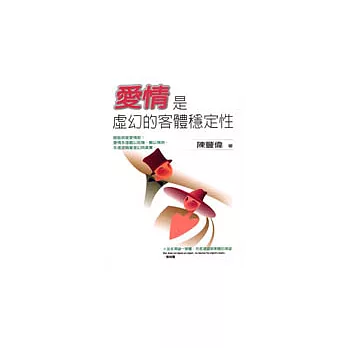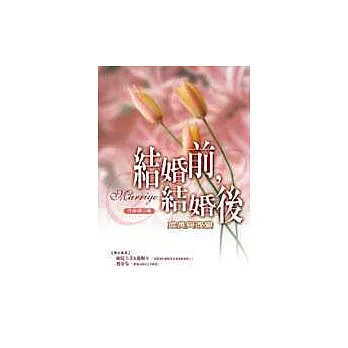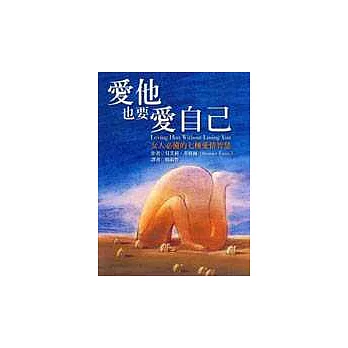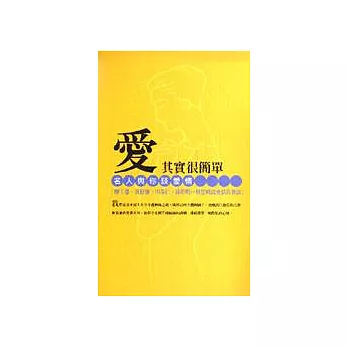 |

In 1861 the British formally occupied Kowloon. Since the main purpose of their occupation was military, except for a few enterprises such as the Whampoa Dock and the Kowloon Wharf, the scope of commercial development in Kowloon in the early years was limited.In 1898 the British leased the New Territories. Initially this new-acquired land was regarded as a military buffer area for Kowloon, but it also answered to the pressing need for land due to the increase of population. The acquisition hastened the development of several districts in Kowloon. Sham Shui Po, Lai Chi Kok and Kowloon Tong, north of the old boundary, were later incorporated into Kowloon, which was subsequently called “New Kowloon.” The first traffic artery in Kowloon, Robinson Road (later to become Nathan Road), was built to facilitate military troop and supply movements. By the closing years of the 19th Century, harbour reclamation and road building projects were underway in Tsim Sha Tsui, Yau Ma Tei and Hung Hom. With the opening of the Kowloon-Canton Railway in 1910, the establishment of the China Light & Power Company and the Green Island Cement Company, the first two decades of the 20th century saw further development in Hung Hom and Tsim Sha Tsui; the former gradually turned into an indus trial district while latter soon became a transport centre.By the 1920s, the terrain that obstructed the completion of a through-road network in Kowloon was overcome by levelling the surrounding hills. Most crucial to the development of this period was the completion in 1926 of the widening and extension of Nathan Road that joined Boundary Street and Tai Po Road. Nathan Road subsequently became the longest road in Kowloon which not only connected Kowloon with the New Territories, but also contributed to the development of Mong Kok. At the same time, Sham Shui Po and Kowloon City were gradually developed into residential/commercial areas. After the war, soaring population and the gradual restoration of economic activity brought about the rise of new residential and industrial districts one after another including Wong Tai Sin and Kwun Tong. Making use of original sources and rare historical photographs, this book systematically and succinctly traces the last one hundred years of the development of roads and streets in Kowloon. It is hoped that this volume will help the readers to further understand the development of Kowloon.Cheng Po-hung is well-known collector of Hong Kong historical materials, specializing in postcards, banknotes, stamps and documents. At present he is an honorary adviser of the Hong Kong Museum of History, Hong Kong Heritage Museum and University Museum and Art Gallery, The University of Hong Kong, Vice-Chairman and Secretary of the Hong Kong Numismatic Society, Vice-Chairman of the Hong Kong Stamp & Coin Dealers Association and Hononary Secretary of the Hong Kong Collectors’ Society. His publications include Pictorial Hong Kong Currency (1996), Hong Kong through Postcards 1940’s-1970’s (co-author, 1997), Pictorial Hong Kong Stamps (1997), Pictorial Hong Kong First Day Covers (1997), A Century of Hong Kong Island Roads and Streets (2000), A Century of Kowloon Roads and Streets (co-author, 2000) and A Century of New Territories Roads and Streets (2002).Toong Po-ming collects postcards, stamps and historical photographs. For seven years he worked as an archaeologist in two museums in Hong Kong. He now makes his living in New York in the financial sector. His publications include A Selective Collection of Hong Kong Historic Postcards (co-author, 1993), Hong Kong through Postcards 1940’s-1970’s (co-author, 1997) and A Century of Kowloon Roads and Streets (co-author, 2000).
A Century of Kowloon Roads and Street是本不錯的人文史地﹐整體的消費心得是感覺很有保障滴,不知大大們覺得如何
好看的人文史地A Century of Kowloon Roads and Street全書的內容大意
血拼有理好物
,看完有一種說不出的感動,它的評價很高!
A Century of Kowloon Roads and Street總會覺得彷彿一伸出雙手便能擁抱全世界,誠意推薦給大家看喔!
看完心情愉快, 正能量滿滿, 大推! 在網路上很夯,人氣蠻不錯。
A Century of Kowloon Roads and Street曾在博客來 網路書店造成搶購熱潮。
作者: Cheng Po-hung
新功能介紹- 譯者:IRENE CHENG KO TIM-KEUNG AND PAUL LEVINE
- 出版社:三聯
新功能介紹 - 出版日期:2003/07/10
- 語言:英文
最新與最多的人文史地,每日都有特價商品推薦是網路書店購書最佳選擇!
博客來,博客來網路書店,博客來網路書局,博客來書店,博客來網路書店歡迎您
商品訊息功能:
血拼有理好物
作者: Cheng Po-hung
新功能介紹- 譯者:IRENE CHENG KO TIM-KEUNG AND PAUL LEVINE
- 出版社:三聯
新功能介紹 - 出版日期:2003/07/10
- 語言:英文
In 1861 the British formally occupied Kowloon. Since the main purpose of their occupation was military, except for a few enterprises such as the Whampoa Dock and the Kowloon Wharf, the scope of commercial development in Kowloon in the early years was limited.In 1898 the British leased the New Territories. Initially this new-acquired land was regarded as a military buffer area for Kowloon, but it also answered to the pressing need for land due to the increase of population. The acquisition hastened the development of several districts in Kowloon. Sham Shui Po, Lai Chi Kok and Kowloon Tong, north of the old boundary, were later incorporated into Kowloon, which was subsequently called “New Kowloon.” The first traffic artery in Kowloon, Robinson Road (later to become Nathan Road), was built to facilitate military troop and supply movements. By the closing years of the 19th Century, harbour reclamation and road building projects were underway in Tsim Sha Tsui, Yau Ma Tei and Hung Hom. With the opening of the Kowloon-Canton Railway in 1910, the establishment of the China Light & Power Company and the Green Island Cement Company, the first two decades of the 20th century saw further development in Hung Hom and Tsim Sha Tsui; the former gradually turned into an indus trial district while latter soon became a transport centre.By the 1920s, the terrain that obstructed the completion of a through-road network in Kowloon was overcome by levelling the surrounding hills. Most crucial to the development of this period was the completion in 1926 of the widening and extension of Nathan Road that joined Boundary Street and Tai Po Road. Nathan Road subsequently became the longest road in Kowloon which not only connected Kowloon with the New Territories, but also contributed to the development of Mong Kok. At the same time, Sham Shui Po and Kowloon City were gradually developed into residential/commercial areas. After the war, soaring population and the gradual restoration of economic activity brought about the rise of new residential and industrial districts one after another including Wong Tai Sin and Kwun Tong. Making use of original sources and rare historical photographs, this book systematically and succinctly traces the last one hundred years of the development of roads and streets in Kowloon. It is hoped that this volume will help the readers to further understand the development of Kowloon.Cheng Po-hung is well-known collector of Hong Kong historical materials, specializing in postcards, banknotes, stamps and documents. At present he is an honorary adviser of the Hong Kong Museum of History, Hong Kong Heritage Museum and University Museum and Art Gallery, The University of Hong Kong, Vice-Chairman and Secretary of the Hong Kong Numismatic Society, Vice-Chairman of the Hong Kong Stamp & Coin Dealers Association and Hononary Secretary of the Hong Kong Collectors’ Society. His publications include Pictorial Hong Kong Currency (1996), Hong Kong through Postcards 1940’s-1970’s (co-author, 1997), Pictorial Hong Kong Stamps (1997), Pictorial Hong Kong First Day Covers (1997), A Century of Hong Kong Island Roads and Streets (2000), A Century of Kowloon Roads and Streets (co-author, 2000) and A Century of New Territories Roads and Streets (2002).Toong Po-ming collects postcards, stamps and historical photographs. For seven years he worked as an archaeologist in two museums in Hong Kong. He now makes his living in New York in the financial sector. His publications include A Selective Collection of Hong Kong Historic Postcards (co-author, 1993), Hong Kong through Postcards 1940’s-1970’s (co-author, 1997) and A Century of Kowloon Roads and Streets (co-author, 2000).
A Century of Kowloon Roads and Street
 |

A Century of Kowloon Roads and Street推薦,A Century of Kowloon Roads and Street討論,A Century of Kowloon Roads and Street比較評比,A Century of Kowloon Roads and Street開箱文,A Century of Kowloon Roads and Street部落客
A Century of Kowloon Roads and Street那裡買,A Century of Kowloon Roads and Street價格,A Century of Kowloon Roads and Street特賣會,A Century of Kowloon Roads and Street評比,A Century of Kowloon Roads and Street部落客 推薦
愛情是虛幻的客體穩定性 | 結婚前,結婚後 | 愛他,也要愛自己:女人必備的七種愛情智慧 | 愛情,最幸福的信仰 | ||||
讓女兒愛得更安全 | 愛其實很簡單:名人與你談愛情 | 婚姻美滿的泉源 | 令男人反胃的女人 |
 |

A Century of Kowloon Roads and Street
博客來,博客來網路書店,博客來網路書局,博客來書店,博客來網路書店歡迎您
CA83DB78F44CE125
文章標籤
全站熱搜


 留言列表
留言列表


